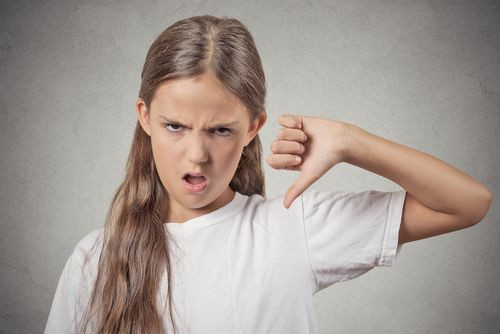Body Image Issues In Middle School Teens Worsen In Presence Of Older Girls

Studies have already shown how unsatisfied and self-conscience teens, especially girls, can be about their bodies, but could the drive for a teenager’s ideal physical appearance be linked to the rest of the student body? Researchers from Macalester College, studied the social interactions, eating habits, attitudes on appearance, and the body conscience feelings of middle school girls, and published their findings in the journal Psychology of Women Quarterly.
Middle school is a time for physical and social changes, which is why researchers decided to ask 1,536 female students in seven different school districts from fifth to eighth grade to answer questions about how they feel about themselves along with what, when, and why they eat. "Elevated levels of body dissatisfaction, drive for thinness, thin-ideal internalization, body surveillance, and body shame may undermine young teens' social, emotional, and academic well-being both during the early teen years and in later life," the authors wrote. "Although body image tends to decline as girls move through adolescence, this study suggests that school grade groupings may influence the pace and timing of this decline."
Researchers focused on the distinct social expectancy difference between two groups: one group of fifth and sixth graders attended school with older students, while the other group consisted of seventh and eighth graders who were separated from younger grades into their own school. Young females are one of the highest groups who experience susceptibility to peer pressures and have negative outlook on their body. Body dissatisfaction and dangerous dieting habits can be amplified with the exposure to older girls.
When the questionnaires revealed fifth and sixth graders who were attending a school with seventh and eighth graders were less satisfied with their body and more self-conscious by almost twice as much, they realized how serious of an impact older girls can have. “The ideal solution, of course, would be to eliminate the body travails of students of all ages; if older teens were more satisfied with their bodies, then exposure to older schoolmates would be benign, the authors wrote."
Low self-esteem can be debilitating for some teens, and 75 percent of girls suffering from the negative feelings low self-esteem drags along with it report engaging in cutting, bullying, smoking, drinking, or develop eating disorders. Meanwhile, 75 percent of girls with high self-esteem would unsurprisingly not participate in any of those negative self-inflicting activities, according to the DoSomething campaign. It is all about recognizing your worth and projecting that self-value to the rest of the world. But when the rest of these young girls’ worlds are full of older girls, envy, jealousy, and the struggle to try and “fit in” is the fuel that flames the self-loathing fire.
Source: Wittenberg CE, Strauss J, Sullivan JM, Sullivan CE, and Sullivan SJ. Contextualizing 'Student Body': Is Exposure to Older Students Associated with Body Dissatisfaction in Female Early Adolescents. Psychology of Women Quarterly. 2014.
Published by Medicaldaily.com



























